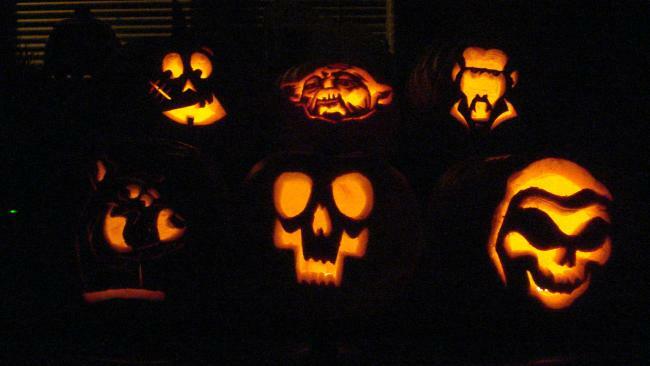Halloween, or Halloween, is a popular celebration of the cult of the dead celebrated annually on the 31st of October.
The term originates from the English expression “All Hallow's Eve” (All Saints Eve) as it is celebrated the day before the November 1st holiday.
The Halloween celebration culture is very strong in Anglo-Saxon speaking countries, especially in the United States. Over time, the holiday gained popularity and is now celebrated, albeit on a smaller scale, in much of the world.
The tradition of Halloween was taken by the Irish to the United States, where the date is considered a holiday.
Origin of Halloween
Most Halloween traditions are believed to have originated in the ancient Celtic festivals called Samhaim, which marked the New Year and the arrival of winter. For the Celts, the beginning of winter represented the approximation between the world and the “Other World”, where the dead live.
The Celts believed that in early winter the dead returned to visit their homes and that hauntings arose to curse their animals and their crops. All symbols that are now characteristic of Halloween were forms used by the Celts to ward off these evil spirits.

Visual representation of the Celtic Samhaim harvest festival. The ceremony marked the end of summer and the beginning of the dark days of winter. The Celts believed that at that time spirits visited this world and, to drive them away, lit fires, lanterns and torches.
Although of pagan origin, Halloween received this name after being Christianized by the Catholic Church, which started to define it as the eve of All Saints' Day.
Halloween symbols
Most halloween symbols have their origins in the early days of the tradition, while others have been added over time. Among the main ones are:
The colors orange and black: Halloween is associated with the colors orange and black as the festival of Samhaim it was celebrated in early autumn, when the leaves turn orange and the days are darker.
pumpkin lantern: the pumpkin lantern Jack o’lantern) has its origins in a Celtic tale about a young man who was forbidden to enter heaven and hell and wanders eternally with his lantern in search of rest.
The tradition of carving pumpkins began in the United States. Previously, countries of Celtic origin carved turnips and inserted candles in the interior in order to ward off spirits.

Examples of Pumpkin Lanterns (jack o'lantern). The Celts' tradition of inserting candles into hollow turnips was carried over to the United States, where large, soft pumpkins became the best choice. The custom, which used to be limited to carving faces on pumpkins, now involves different shapes.
masks and costumes: the Celts believed that on the day of Samhaim, masks and costumes helped to deceive the spirits, who did not recognize humans and continued to wander the world without disturbing them.
Currently, Halloween is heavily marked by costume parties that generally follow the dark theme of witches, zombies, skeletons, etc. However, in countries where the tradition is not so followed (such as Brazil), parties usually involve any type of costume.
Skeletons and Ghosts: for the Celts, the dead assumed, among other forms, that of skeletons and ghosts.
bats: Samhaim festivals always involved the use of bonfires, which ended up attracting bats.
tricks and treats: from English trick or treat, originated in Great Britain but was popularized in the United States in the 1950s. The activity is aimed at children who, in costumes, go from door to door asking “trick or treat?”. If the person doesn't give some freebies like candy or money, the children do some mischief in your house.
Halloween in Brazil
Due to American influence, Halloween is also celebrated in Brazil on October 31st, but the party does not have the same meaning and cultural value as the countries of the northern hemisphere.
Much of the Halloween tradition in Brazil is influenced by language courses that promote the date as a way to introduce students to the culture of English-speaking countries.
In Brazil, Halloween is mainly marked by costume parties and decorations in bars, cafeterias and other establishments, which adopt the theme of monsters, vampires, witches, etc.
See too:
- Folklore
- Legend
- Witch
